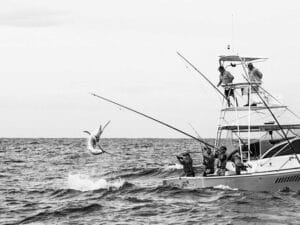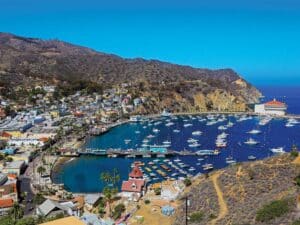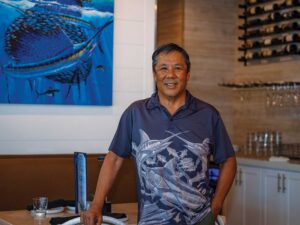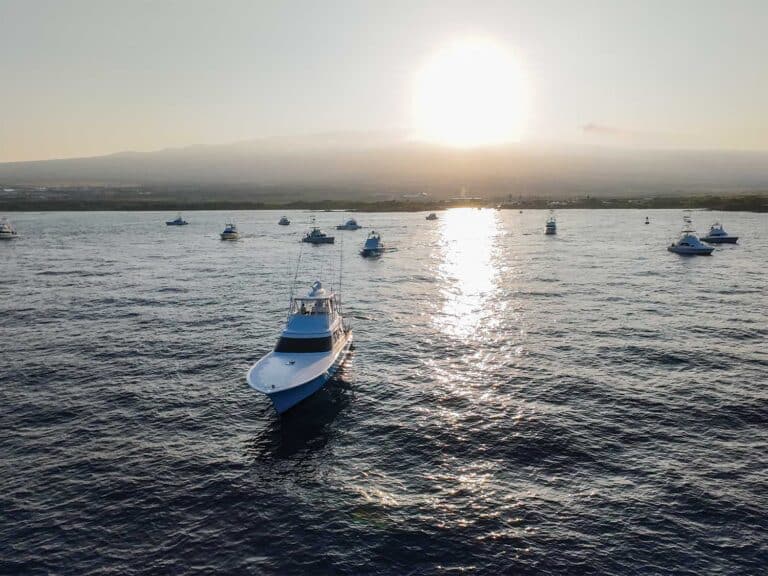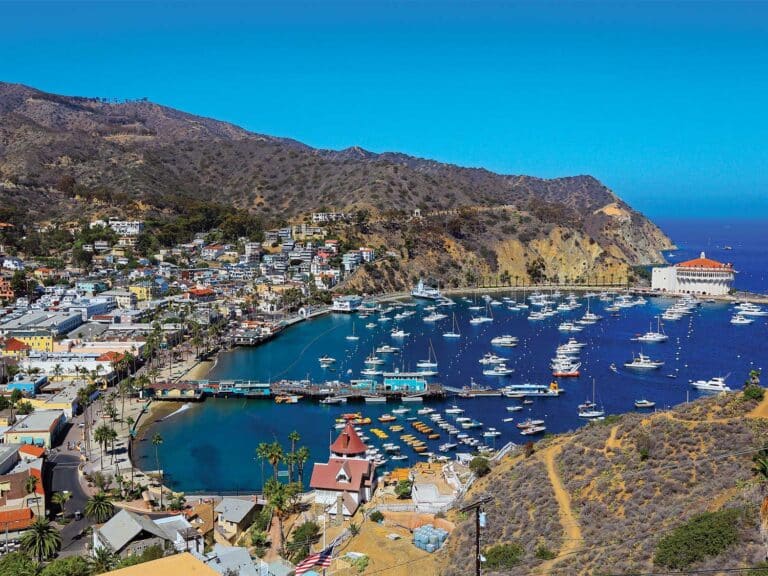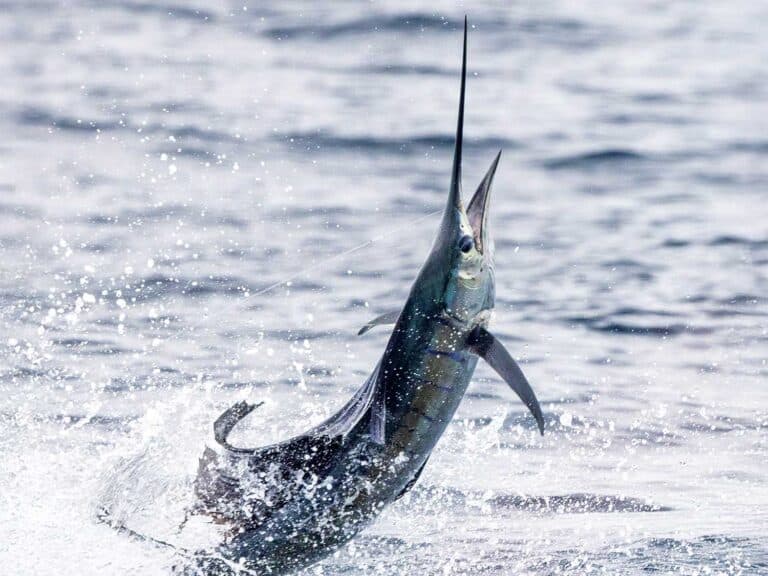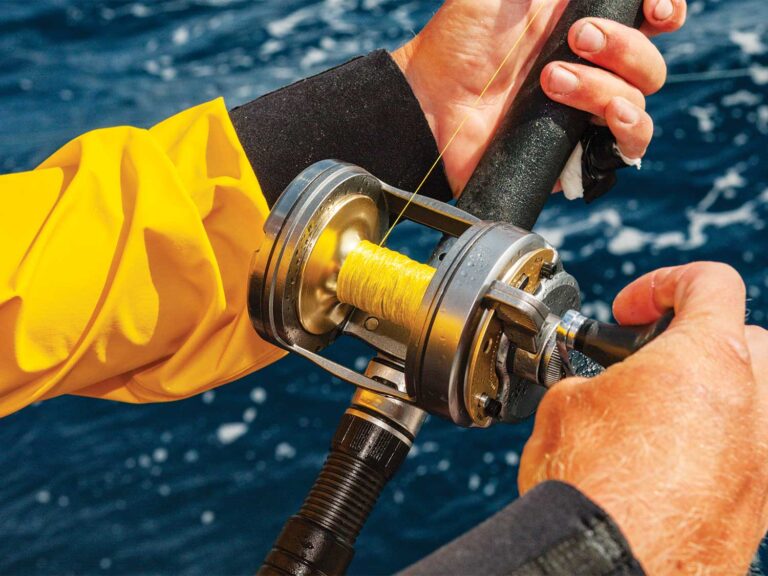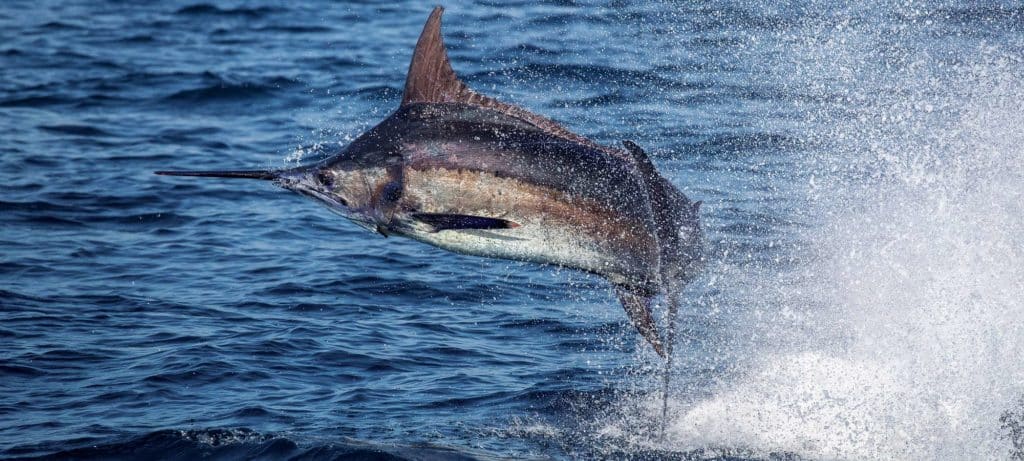
The current was swirling around the southeastern end of Rum Cay, creating breakers along the reef’s edge that would make any surfer drool, but we weren’t there for the curls. The current had been steadily pounding against the offshore ledge for the past few days, according to the latest satellite reports from Roffer’s Ocean Fishing Forecasting Service and the internet feed from FishTrack, both sources that our captain monitored closely. “Current is the key to finding fish in this area of the Bahamas,” says Capt. Sid Ernst, skipper of AEI, a 64-foot Viking convertible that has spent a minimum of six weeks fishing the surrounding waters each spring for the past four years.
He was heading back for season number five during our most recent conversation. “We monitor both services and find the best fishing where the prevailing current has been consistently hitting specific structure features for two, three days or more.”
The run from Flying Fish Marina in Clarence Town, Long Island, that morning was a pleasant 39-mile cruise, interrupted twice by working birds along the way. This is only one of the milk runs to potential hot spots Ernst makes regularly when conditions are right. We were trolling a spread of plastics along with surface teasers and mudflap dredges when the long rigger went off and a feisty white marlin started dancing in the wake. The small marlin managed to eat an oversize Black Bart Breakfast, which seemed an unlikely target. This one didn’t hesitate to take an aggressive swipe at one of the biggest lures in the pattern.
Rachel Smit, a guest aboard AEI along with her husband, Ron, made short work of the fish, and Ernst was back on the troll in no time. Another pass down the drop-off and we raised a blue marlin on the dredge. Spencer Sharf, our deckhand extraordinaire, grabbed a pitch-bait rod armed with a horse ballyhoo and dropped it back to the glowing blue. He was rewarded with an immediate response as the marlin downed the offering, turned and felt the sting of the circle hook. It made a spectacular run, punctuated by several inspired jumps, then greyhounded parallel to the direction of the boat before sounding. Rachel worked the fish back to the surface and brought it alongside the boat, where we got a good look at all 250 pounds of it before Sharf tagged, billed, unhooked and released the marlin to fight again another day.
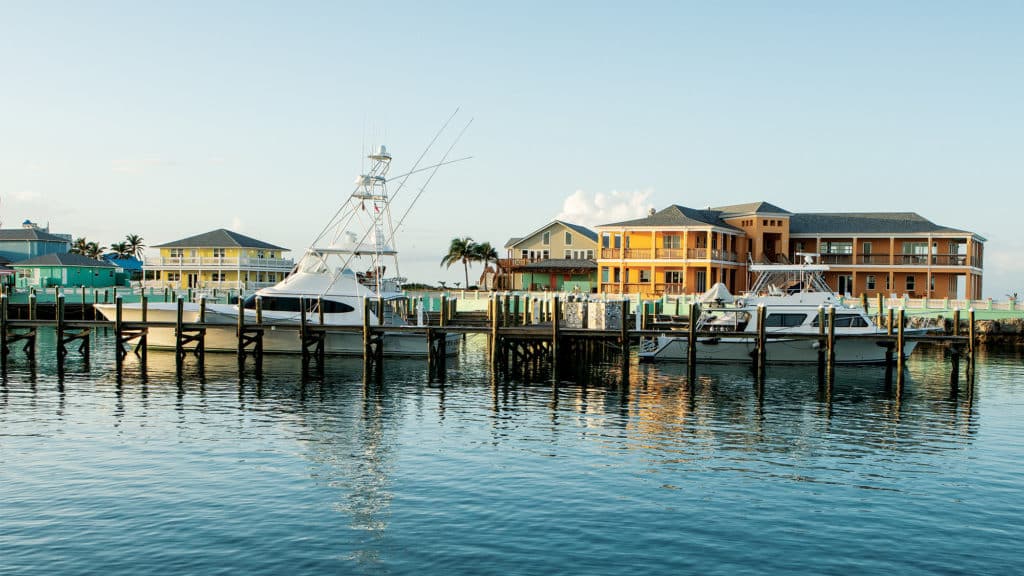
Away from the Madding Crowds
Long Island might not rank as a top tourist destination in the Bahamas, but for those who have stumbled across this island gem in their travels, that is one of its most alluring charms. It is beautiful, off the beaten path, uncluttered and located within easy reach of some of the best billfishing in the entire region. This narrow spit of land that sits on the eastern edge of the Bahama Bank has a long history of hosting visiting mariners, dating back to one Christopher Columbus. While he was not a billfisherman, it is believed that after making an initial landfall on the nearby island of San Salvador, Columbus did a little Bahamas sightseeing, eventually setting foot on the northern coast of Long Island. He claimed the land for Spain and christened it Fernandina. Legend has it that some time later, its current common name became accepted after mariners claimed it took forever to get from one end to the other because of its length. At approximately 80 miles from its northern to southern tips, it is a long island, indeed.
Long Island’s ocean side is made up of areas of rugged coastline and some of the Bahamas’ most beautiful beaches. Cape Santa Maria beach is considered among the most gorgeous in the world, in fact. After the extensive damage caused by Hurricane Joaquin in October 2015, it is believed that fewer than 2,000 people live on the island today. Driving northward on Queen’s Road, the island’s sole major road, on a sightseeing jaunt with Ernest Major, our resourceful driver, guide, local historian and knower of all things Long Island, we noted a few houses still standing vacant and roofless. If you’re planning to visit the island, Major, whose nickname is “Dat Guy,” should be on your speed dial for everything from taxi service to sightseeing, finding the best restaurants, prettiest beaches, hooking up with bonefish guides, or getting you to the right places to provision your boat. If you use his services, you will surely thank me later for the heads-up.
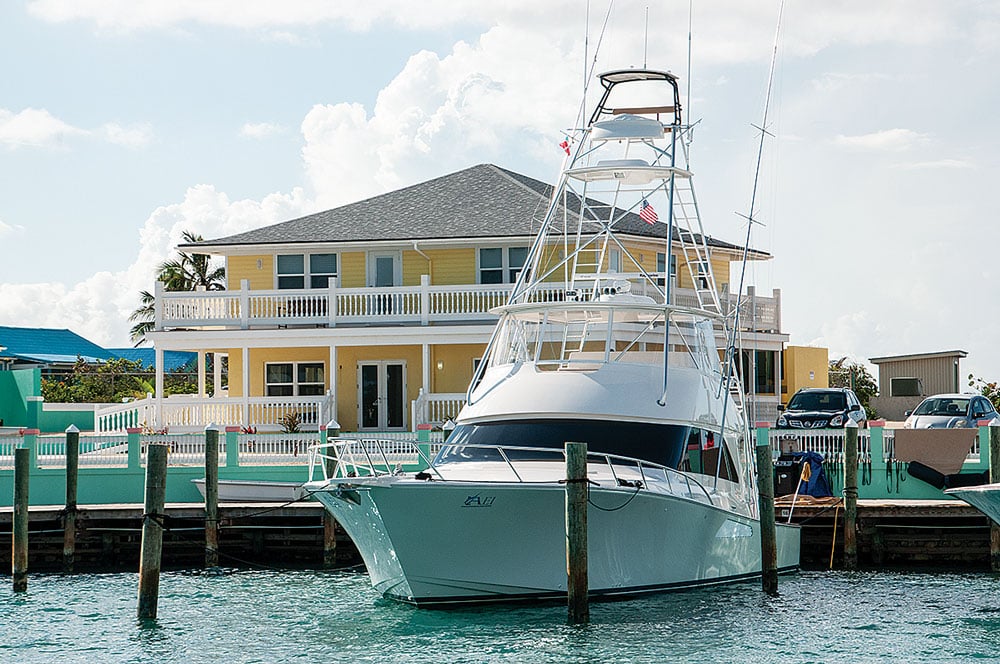
The center of attraction in Clarence Town harbor is the recently renovated and expanded Flying Fish Marina. Long recognized as a reliable fuel stop, it now offers a much wider range of services. The new two-story marina building sits at the end of a small peninsula and currently has 22 permanent slips behind a protective seawall, with plans for further expansion. Flying Fish Marina maintains a 50,000-gallon supply of diesel and 10,000 gallons of gasoline with filtration systems; fresh fuel is delivered every two weeks via barge. It provides three-phase electrical power from the island grid to dockside hookups as well as a 200 kW backup generator on site, both run through step-up transformers to maintain appropriate voltage. There is potable fresh water dockside too. The expanded marine store offers a larger selection of general marine supplies than before, plus ice, Baitmasters baits and a small assortment of tackle. Access to almost any marine parts you might need are available from the store’s supplier in Nassau, usually within 24 hours via the regularly scheduled flights in and out of the island. Guests have access to a beautiful in-ground swimming pool in which to relax on lay days, and the Lighthouse Restaurant and Bar is located on the second floor of the building, where you can dine and relax with open-air views of the ocean, harbor and surrounding town. We spent a bit of time there sampling the fare and imbibing, and it gets two thumbs up from our team. The marina currently has two apartments and two efficiencies on site, and is renovating the former marina offices as additional rentals.
Flying Fish Marina is managed by Capt. Jason Edler and his wife, Wendy, who work hard to accommodate their guests’ needs. Edler also runs the marina owner’s 74-foot Viking, Caballo Grande, and is an accomplished sport-fish captain in his own right. He’s always up on the current fishing action and willing to help. A short walk from the marina is the Rowdy Boys restaurant on the beach, serving up locally caught seafood and island cuisine, and the Friday-night pig roast is not to be missed. A little farther down the road and up the hill is Nana’s Bakery, where you can get fresh island bread and wonderful homemade sandwiches. About 8 miles north of Clarence Town on Queen’s Road is Lloyd’s Restaurant, located across the street from the turn-off for Dean’s Blue Hole, the deepest inland blue hole in the Bahamas, plunging to over 650 feet.
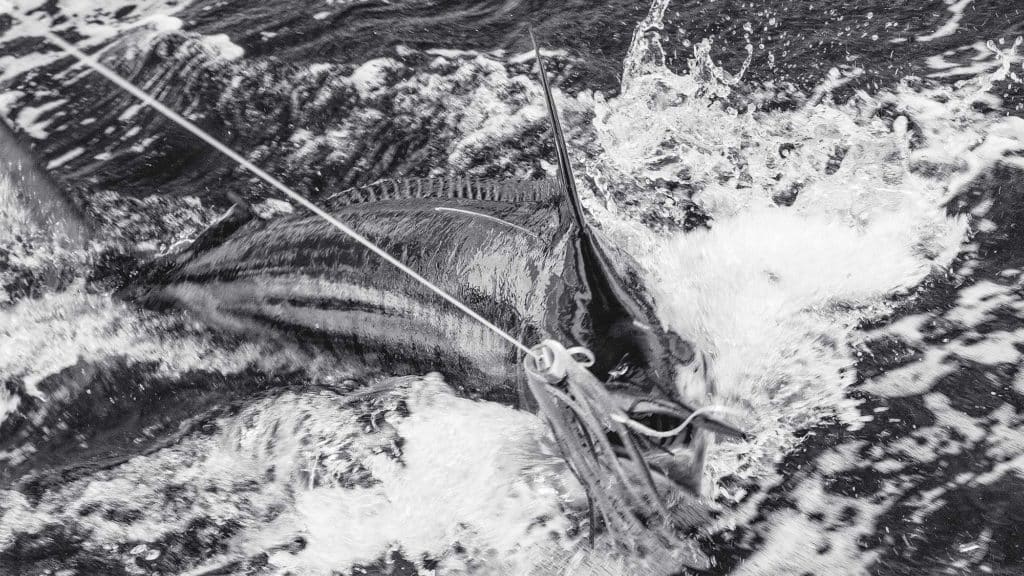
Bahamas Fishing Central
“Besides loving the facilities at Flying Fish, the reason we keep bringing AEI back year after year is its proximity to so many great places to fish,” Ernst told me as we headed toward another favorite spot, Diana Bank. “Pick a direction, and you can be on prime fishing grounds in less than 40 miles. We’ve had some great days of fishing on Simms Bar right out front,” he says, referring to an 8-mile-long shelf that extends eastward from the island between Clarence Town and Great Harbour. “Imagine catching tuna, dolphin and marlin just 6 miles from the dock. It’s a great spot for wahoo earlier in the season too,” he says.
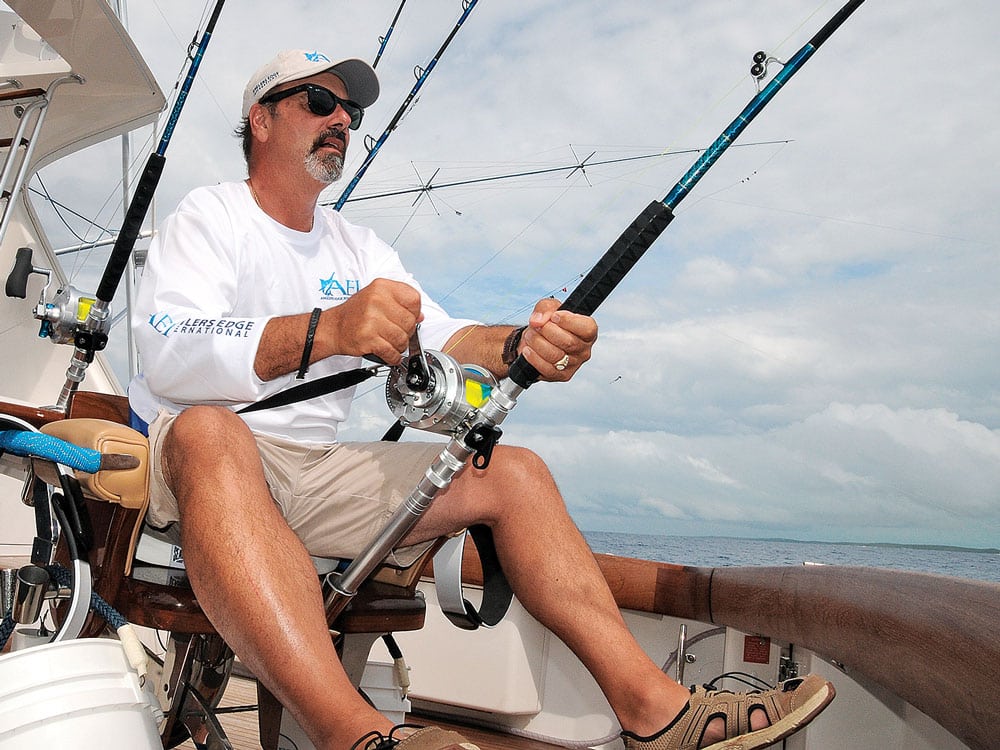
During their typical spring stay on the island, Ernst will fish Conception, Rum Cay, Crooked Island and the Acklins. Diana Bank, an awesome seamount that rises out of many thousands of feet of water to within 55 feet of the surface, is close by and offers some of the most consistent fishing. The upwellings it creates when current is striking it starts the whole circle of life with plankton blooms, bait, small predators and then the tuna and billfish. It is among the most consistent producers in the area, and only about a 28-mile run from the marina.
“When the forecast is for calm seas for a few days, my boss Jeff Marlow likes to head to Samana Cay, about 70 miles east-southeast of the marina, and spend two or three days there concentrating his efforts on tuna and big blues,” Ernst mentions. “The water on the east side drops quickly into 15,000 feet, and we can always find a leeward anchorage to spend the night. We’ve had blues there to 600 pounds, and tuna fishing can be red hot.”
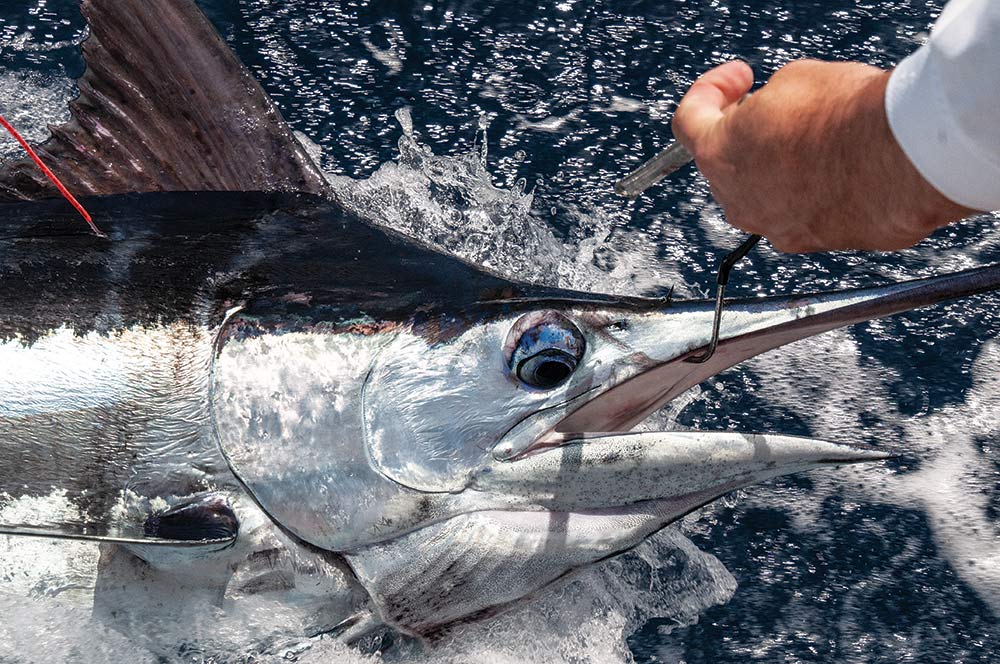
Ernst also explains that he doesn’t usually fish a lot of natural baits here like they do in the Dominican Republic. “There are just too many barracuda to chew them up, especially on spots like Diana Bank and the south side of Rum,” he says. “We’ve done well on the plastics, and there are always natural baits on the pitch-bait rods.”
AEI‘s typical trolling spread for this area consists of four lines in the water: two Shimano Tiagra 50Ws in the rocket launcher fished through the riggers, and two Talica flat lines in the gunwale rod holders. Two pitch-bait rods are located in the center positions of the rocket launcher, the baits kept cold and wet in a nicely designed tube arrangement mounted to the offset base of the chair for quick deployment. Pitch baits vary from medium to horse ballyhoo and Spanish mackerel on circle hooks. Ernst uses a large double-tier dredge armed with mudflaps, with black-and-purple and blue-and-white dredge heads over the flaps on the outside of the arms, along with a pair of squid daisy chains with a horse ballyhoo or Spanish mackerel under a chugger head or Ilander skirt as a chaser. He is partial to Black Bart lures, but keeps a wide selection of plastics of all sizes and brands in the arsenal. The electric-blue Breakfast was a hot ticket during my days aboard.
The leeward side of the island harbors endless miles of soft sand flats that are home to some of the best bonefishing in the Bahamas. There are a few independent local guides, and the Long Island Bonefish Lodge, a do-it-yourself bonefish operation on the shores of Deadman’s Cay flats, is only a short ride from Flying Fish Marina. I spent a day wading the flats with the Smits, where we saw many schools of 3- to 6-pound bones and caught quite a few. We also saw some bruisers that managed to elude my oft-errant flies. There is almost no competition for space on these beautiful waters because anglers are few and far between.
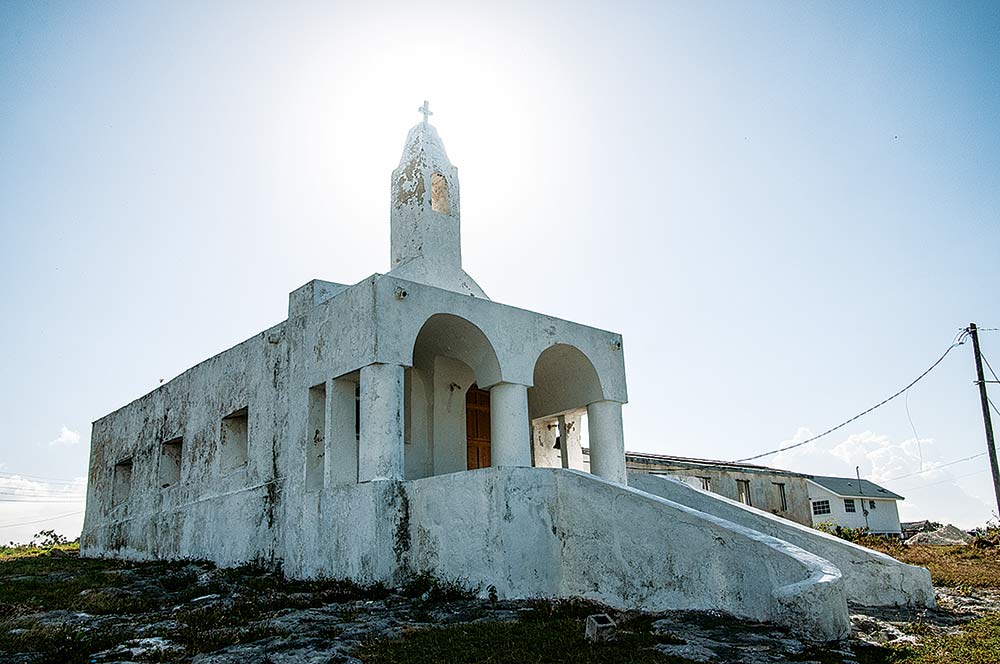
The Sum of the Island
Long Island is not for everyone. If you fancy hot nightlife and five-star restaurants, just fuel up and pass on through. But if you like a more secluded area of the Bahamas, away from even a hint of a tourist crowd, that has beautiful scenery and excellent fishing, spending time at Flying Fish Marina just might be for you. The island is home to numerous quaint, old Catholic and Anglican churches dating back to the 1800s. Some are in good repair; others are in ruins. The Dunmore Catholic Church is like a vision in white with the sun setting behind it. When I asked Major why there were so many churches on such a small island, he said, “Because we have a lot of sinners. Two Hail Marys, two Our Fathers and all is forgiven, then you get to start over.” St. Mary’s is the oldest, today standing in ruins but still beautiful. It is believed to be the oldest church in the Bahamas, dating back to 1799. We walked inside its roofless walls and were moved by the stillness and the souls that came before. Take a short walk through the foliage behind the old church, following a winding footpath, and you’ll come upon a series of flooded caves carved out of jagged rock, with water so clear it almost appears to not be there at all.
Long Island is an easy place to fall in love with, and that’s even before you head offshore to fish. Once you do, you’ll definitely be hooked.
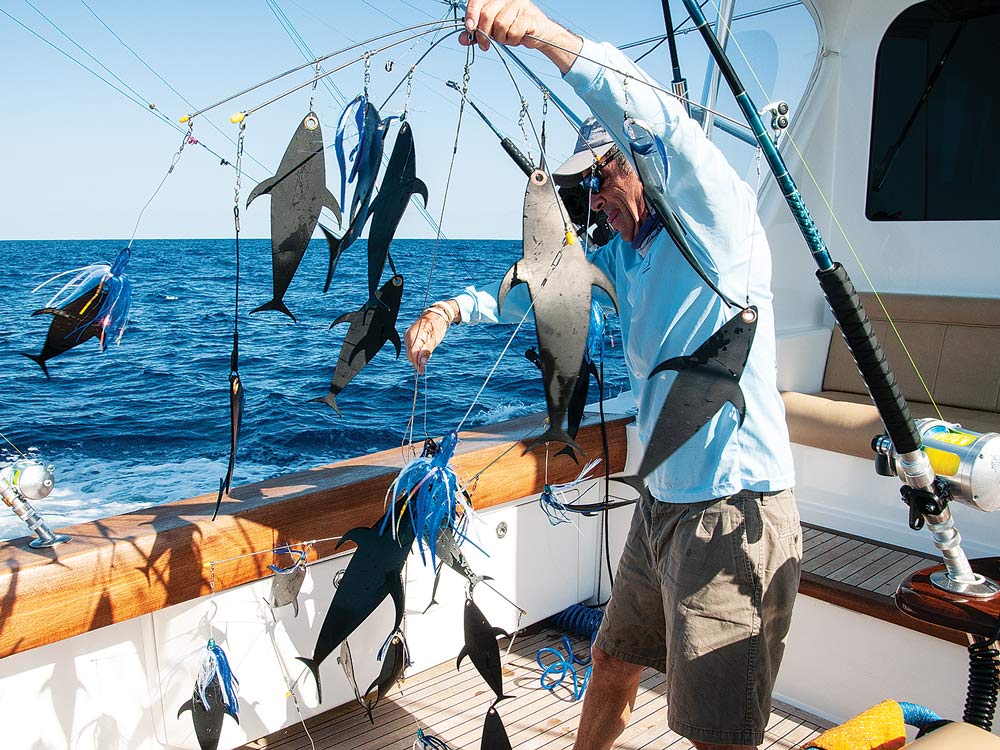
Getting There, Staying There and Getting Around
If you’re coming to Long Island to fish, bring a boat. No bluewater charters are available. Clarence Town is a 300-mile run from Nassau taking the outside route, and about 375 miles from the north coast of the Dominican Republic.
Getting to Long Island by air is easy, with regularly scheduled flights on Bahamasair and Southern Air from Nassau to both airports on the island twice a day. Deadman’s Cay Airport is closest to Clarence Town.
Places to stay in and near Clarence Town include Flying Fish Marina (email: [email protected], Winter Haven Inn, Harbor Breeze Villas, Gems at Paradise Resort, and Dawn’s Bayview Motel. Other accommodations are available farther away, including a number of small bed-and-breakfasts and the bonefish lodge.
None of the major car-rental companies have locations on the island, but a number of small local rental agencies are available near Deadman’s Cay Airport. The typical rate for a sedan is $55 a day or $300 per week with a $100 cash deposit. Four-wheel drives are slightly more expensive and really not necessary even for most areas inaccessible by paved roads.
Ernest Major provides car service, tours and much more. He loves assisting visiting fishermen and their families, and is one of the best resources on the island. Call or text him at 242-472-3365.
Prime Times
- Wahoo: October through mid-March
- Yellowfin Tuna: March through May
- White Marlin: April and May
- Blue Marlin: May through early July
Want big wahoo?
The nearby Columbus Bank consistently produces 90-pound fish. Simms Bar, also known as the Finger, produces a lot of wahoo during the season, and a surprising number of marlin when conditions are right. It’s only 6 miles from the marina. Bottom and deep-drop fishing are available year-round, with the typical Bahama fare of grouper, queen snapper and wreckfish. Drop a line and see what’s for dinner.

